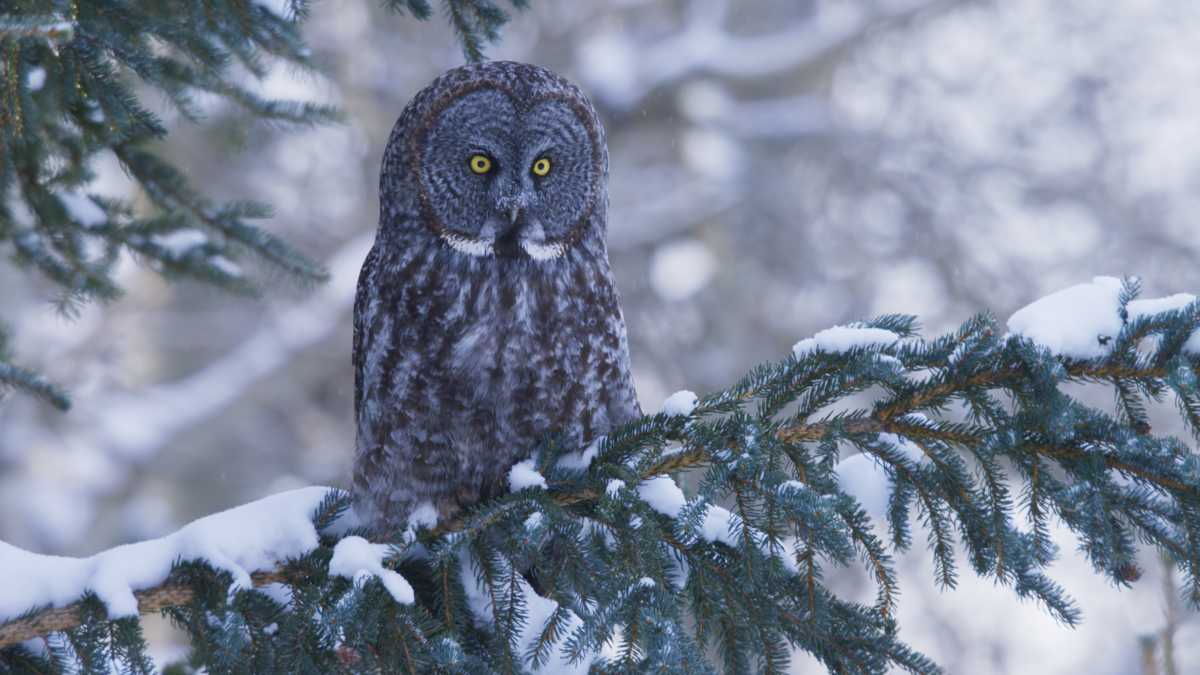It’s no secret that David Attenborough’s documentaries such as Planet Earth III and Dynasties use some of the most advanced technology on the market, capturing natural spectacles that leave audiences (myself included) in tears.
The latest project from Humble Bee Films and Infield Fly Productions, starring the revered presenter, brings this gear to the forefront.
Secret World of Sound, which debuts on Sky Nature and Now this weekend, explores how animals communicate through their noises and how this influences their behavior. The miniseries uses organic audio recorded at the time of filming, a change from many nature documentaries which add audio effects from an existing library in post-production.
I got a first look at the first episode, Hunters and Hunted, which explains how sound is crucial to the survival of predators and prey. The other two episodes in the series, Love and Rivals and Finding a Voice, examine the role of sound in mating and growing up, respectively.
The cameras and microphones used in this documentary can capture sound that cannot be heard by human ears – either because it is too quiet or beyond our frequency range. Some microphones have been physically designed to fit into complex environments. For example, the team used one that was the size of a small fingernail so it could be slipped into a hive.
Series producer Sharmila Choudhury revealed in a press release that the team adapted two pieces of equipment that had never been used in nature documentaries before. The first is an acoustic camera surrounded by around sixty microphones. Traditionally, this is a key element in determining the location of gas leaks.
Chodhury explained why this technology is so useful for filmmakers: “…the microphones impose a sort of thermal image on the camera and show you with a red hot spot where the sound is coming from. As we move away from the sound, the colors change. We thought it would be good to try to find animals using sounds that we can’t normally hear or locate.”
Secret World of Sound uses these acoustic cameras on numerous occasions. In a behind-the-scenes clip, we saw an expert uncover the intricacies of exactly how a great gray owl manages to spot its prey under the snow by what it can hear, and why it often misses its capture due to the ‘environment. the movements seem to take place in a completely different place.

Sky Nature / Now
Another interesting piece of equipment used in this series is a laser vibrometer, originally developed for surveillance, such as when officers attempt to eavesdrop on a conversation. However, the Humble Bee Films team has been doing some spying themselves using this technology to understand how insects communicate through vibrations.
This is a perfect example of a documentary highlighting how animals use more than their ears to communicate via sound. Elephants can detect the vibrations of a storm from hundreds of miles away by using special sensors in their feet, so the sound travels up their bodies and into the bones of their ears.
We see a herd using this technique to chase away rain so they can find sustenance during an unforgivable drought, brought on by climate change. Many years ago, their environment would have been filled with plants and abundant water.
Climate change is a subject that Sir David Attenborough, 97, has continued to raise awareness about throughout his career. He’s stepping in front of the camera again for this documentary to spread the message and advocate for change. His tone is as articulate as ever and he has that playful spirit in fun segments that fans have grown to love. A later episode of the series also shows him getting up close and personal with an animal, as he has done several times before.
A less important element than usual compared to other series is the music. In the Planet Earth series, legendary composer Hans Zimmer has created moving, film-worthy music. However, the team wanted the real sound to do the talking this time. The first episode opens, for example, with the haunting roars of lions across the savannah.

Sky Nature / Now
In a Q&A session after the screening, Choudhury said the following: “…music is important, but we wanted to use it as little as possible, and wherever we could, we let natural sounds play . Both in terms of the environment…and the animal sounds themselves.
This adds an extra level of immersion for the audience, as you feel among the wildlife while you watch. Of course, music hasn’t completely disappeared, as producer/director Gemma Brandt explains: “We had a brilliant composer, Suad Bushnaq… the music we used a lot works because it can help give an emotional cue .
“The topic I was tackling in my episode – mating – is always pretty funny, so when I put music on, I wanted a little bit of that comedy to come through because, you know, sex in the natural world can be funny.”
As a tech writer, it’s fascinating to see how Secret World of Sound uses equipment from other industries to make discoveries about our natural world, and I’m sure any other gadget enthusiasts reading will agree . Lasting three episodes, it’s a short engagement. Nevertheless, you will definitely learn a lot while enjoying stunning visuals and mesmerizing sounds.
Also, it’s probably worth mentioning: although the first episode featured a particularly brutal nighttime hunting scene, there weren’t any emotionally traumatic moments with cute baby animals like one might expect. .. although I can’t make any promises about episodes two and three. .
You can watch all three episodes of Secret World of Sound on Sky Nature and Now from February 25, 2024 – no US release date has been announced yet. You can get the channel via Sky Q, Sky Glass or Sky Stream, or sign up to Now’s flexible entertainment subscription for £9.99 a month.
The best way to experience Secret World of Sound is through speakers that support Dolby Atmos 360 sound, which you can get using a soundbar like Sonos, Denon, and Bose.








